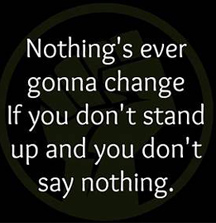Halfway through the extended effort to count every U.S. resident, many Americans like Vance Davis are worried that Black communities are falling behind in responding to the 2020 Census. Davis lives on DC’s east end where the response rate in one of the Blackest ward’s stood at 45 percent, while the rate completely across town in one of the Whitest wards stood at 69 percent, a 24 percent gap. “I was very disappointed that none of the local candidates in the recent DC primary election visibly pushed the 2020 Census,” she said.
For the entire city, the response rate stood at about 58 percent in mid-June. “Elected officials need to understand that it's in their best interest to push for a good count in their community. A good count will justify their requests for various programs for the city and in their immediate community,” she admonished.
Low Census participation is not just a characteristic of Blacks in DC. “Hoosiers Leading On Census,” read a Northwest Indiana Times headline, with about 66 percent of Hoosiers having responded to the Census either online or by paper by mid-June. In Lake County, one of the few multi-racial counties in Indiana, about 66 percent of households had also responded. However, the response rate for vastly majority Black Gary, one of the cities in Lake County, was down to less than 45 percent, a 21 percent gap.
African American participation in the Census is not the only participation rate that has not kept pace. Nationwide, the Census also found Black voter turnout was 59.6 percent in 2016 compared to 65.3 percent for Whites, the lowest Black turnout rate since 2000, and a 5.7 percent gap. (The Black turnout rate was down sharply from 2012 when it stood at 66.6 percent, but surprisingly slightly higher than the White turnout rate of 64.1 percent.)
Just two weeks ago, the participation rate for the Port Of Harlem readers’ Short Survey was surprisingly low, only about four percent amongst our most active readers. A four percent response rate not only looks bad but it is unreliable.
Census, Voting, Surveys: Do Blacks Want to Matter?

The media environment in 2020 is significantly different than in 2010 observed the Census Bureau when planning its media campaign to include reaching more people at a higher frequency than in 2010. Carol H. Williams Advertising is the company most responsible for reaching the Black/African American, Sub-Saharan African, and Afro-Caribbean audiences. In the same vein, Port Of Harlem is reaching more of our readers at a higher frequency than in 2007, when we last conducted a readership survey.
After sending a second request via email to our readers, the response rate soared from 4 to 23 percent. For some, this will be third requests they receive.
We use the information to better serve your needs and to give our current and potential advertisers a better idea of whom we are reaching.
Despite all the talk and protests, these participation rates really begs one to ask if Blacks truly think their voices matter or do they really subconsciously want to matter.
Davis lives on DC’s east end where the response rate in one of the Blackest ward’s stood at 45 percent, while the rate completely across town in one of the Whitest wards stood at 69 percent, a 24 percent gap.
The 2020 census had been scheduled to stop at the end of July, but the deadline has now been extended to the end of October (Now, it is September 30). You can fill out the census online, over the phone (844-330-2020), or by mail – You will need to enter the 12-digit Census ID found in the materials Census mailed to you or left at your door. If you don’t complete it, Census Bureau staff will visit your home anytime between August 11 and the end of October (Now, it is September 30) to help make sure everyone is counted.
Use this NAACP portal page to find your polling place or check your registration. Vote!
Click here to participate in the eight question 2020 Port Of Harlem magazine Short Survey. Thanks!
After sending a second request via email to our readers, the response rate soared from 4 to 23 percent. For some, this will be third requests they receive.
We use the information to better serve your needs and to give our current and potential advertisers a better idea of whom we are reaching.
Despite all the talk and protests, these participation rates really begs one to ask if Blacks truly think their voices matter or do they really subconsciously want to matter.
Davis lives on DC’s east end where the response rate in one of the Blackest ward’s stood at 45 percent, while the rate completely across town in one of the Whitest wards stood at 69 percent, a 24 percent gap.
The 2020 census had been scheduled to stop at the end of July, but the deadline has now been extended to the end of October (Now, it is September 30). You can fill out the census online, over the phone (844-330-2020), or by mail – You will need to enter the 12-digit Census ID found in the materials Census mailed to you or left at your door. If you don’t complete it, Census Bureau staff will visit your home anytime between August 11 and the end of October (Now, it is September 30) to help make sure everyone is counted.
Use this NAACP portal page to find your polling place or check your registration. Vote!
Click here to participate in the eight question 2020 Port Of Harlem magazine Short Survey. Thanks!
Advertisers | Contact Us | Events | Links | Media Kit | Our Company | Payments Pier
Press Room | Print Cover Stories Archives | Electronic Issues and Talk Radio Archives | Writer's Guidelines






